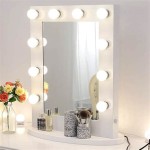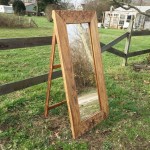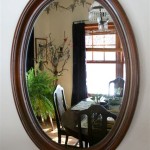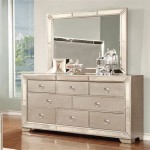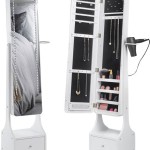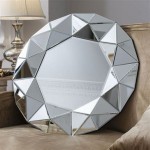How To Remove a Bathroom Mirror With Brackets
Removing a bathroom mirror secured with brackets requires careful planning and execution to prevent damage to the mirror, wall, and oneself. This process involves several steps, each crucial for a successful and safe removal.
Assessment and Preparation: Before initiating the removal process, careful assessment of the mirror and its mounting brackets is essential. Identify the type of brackets used. Common types include J-clips, L-brackets, and clips that hold the mirror from the sides or top. Determining the bracket type informs the subsequent removal strategy. Next, gather the necessary tools. These typically include a putty knife, a screwdriver (Phillips or flathead, depending on the bracket screws), safety glasses, work gloves, and possibly a pry bar. Having a helper available is also recommended for larger or heavier mirrors.
Protecting the Surroundings: Protecting the surrounding surfaces is a vital preparatory step. Cover the sink, countertop, and floor with drop cloths or old towels to prevent damage from falling debris or dropped tools. Applying masking tape along the edges of the mirror can help prevent scratches and chipping, and can also hold the mirror together if it cracks during removal. Wearing work gloves and safety glasses is critical for personal protection.
Loosening the Mirror from the Adhesive (if applicable): Many mirrors are adhered to the wall in addition to being secured with brackets. If adhesive is present, carefully loosen the mirror from the wall. A thin, flexible putty knife or a specialized mirror removal tool can be inserted between the mirror and the wall to gently break the adhesive bond. Work slowly and methodically, applying even pressure to avoid cracking the mirror. Warm water or a heat gun (used with extreme caution) can help soften stubborn adhesive.
Removing the Brackets: Once the adhesive is loosened (if applicable), the next step is removing the brackets themselves. Using the appropriate screwdriver, carefully remove the screws securing the brackets to the wall. Keep track of these screws for potential future use. If the brackets are holding the mirror from the sides or the top, it might be necessary to have a helper support the mirror while the brackets are removed. Some brackets, especially clip-on styles, can be unclipped directly without removing screws. Carefully study the bracket mechanism before attempting removal.
Detaching the Mirror: If the brackets are J-clips or L-brackets, the mirror may simply lift off once the screws are removed. However, with other types of brackets, gentle maneuvering may be necessary to detach the mirror. Avoid forcing the mirror. If it resists, double-check to ensure all screws and clips are removed. For mirrors glued to the wall, continue working the putty knife or removal tool behind the mirror until it comes free.
Lifting and Storing the Mirror: Once detached, carefully lift the mirror away from the wall. For large or heavy mirrors, having a helper is essential. Handle the mirror with both hands, supporting it from the bottom and sides. If transporting the mirror, consider using a mirror box or wrapping it in blankets or protective padding. Store the mirror in a safe, dry place, preferably upright and leaning against a wall.
Addressing Wall Damage: Removing a mirror often leaves behind adhesive residue, screw holes, or other imperfections on the wall. Depending on the extent of the damage and future plans for the space, several options exist for repair. Adhesive residue can be removed with a solvent or adhesive remover. Screw holes can be filled with spackle and sanded smooth. For significant wall damage, patching or replacing the drywall entirely may be necessary.
Disposal Considerations: Proper disposal of the old mirror is crucial, especially for large mirrors. Wrapping the mirror in cardboard or heavy blankets can help contain shards if it breaks during transport. Consult local waste management guidelines for appropriate disposal methods, as some areas may have specific regulations for disposing of large glass items. Recycling options might also be available depending on the locality.
Alternative Methods for Difficult Cases: In situations where the mirror is particularly difficult to remove due to stubborn adhesive or unusual mounting methods, consulting a professional glazier or handyman is recommended. They possess the expertise and specialized tools to remove the mirror safely and efficiently, minimizing the risk of damage to the mirror and the surrounding area.
Safety Precautions Throughout the Process: Prioritize safety throughout the removal process. Remember to wear appropriate safety gear, including work gloves and safety glasses. Use caution when handling sharp tools and broken glass. For larger or heavier mirrors, ensure adequate assistance is available to prevent accidents. If unsure about any step, consult a professional for guidance.

Taking Down A Bathroom Mirror

How To Remove A Bathroom Mirror Lowe S

How To Remove A Frameless Mirror Like Nervous Grandma

How To Remove A Bathroom Mirror Lowe S

How To Safely And Easily Remove A Large Bathroom Builder Mirror From The Wall Site Title

Removing A Bathroom Mirror Mounting Clips Or Brackets

How To Safely And Easily Remove A Large Bathroom Builder Mirror From The Wall Site Title

How To Safely And Easily Remove A Large Bathroom Builder Mirror From The Wall Site Title

2 Step Guide How To Remove A Bathroom Mirror With Clips

How To Frame A Bathroom Mirror Over Plastic Clips Somewhat Simple

